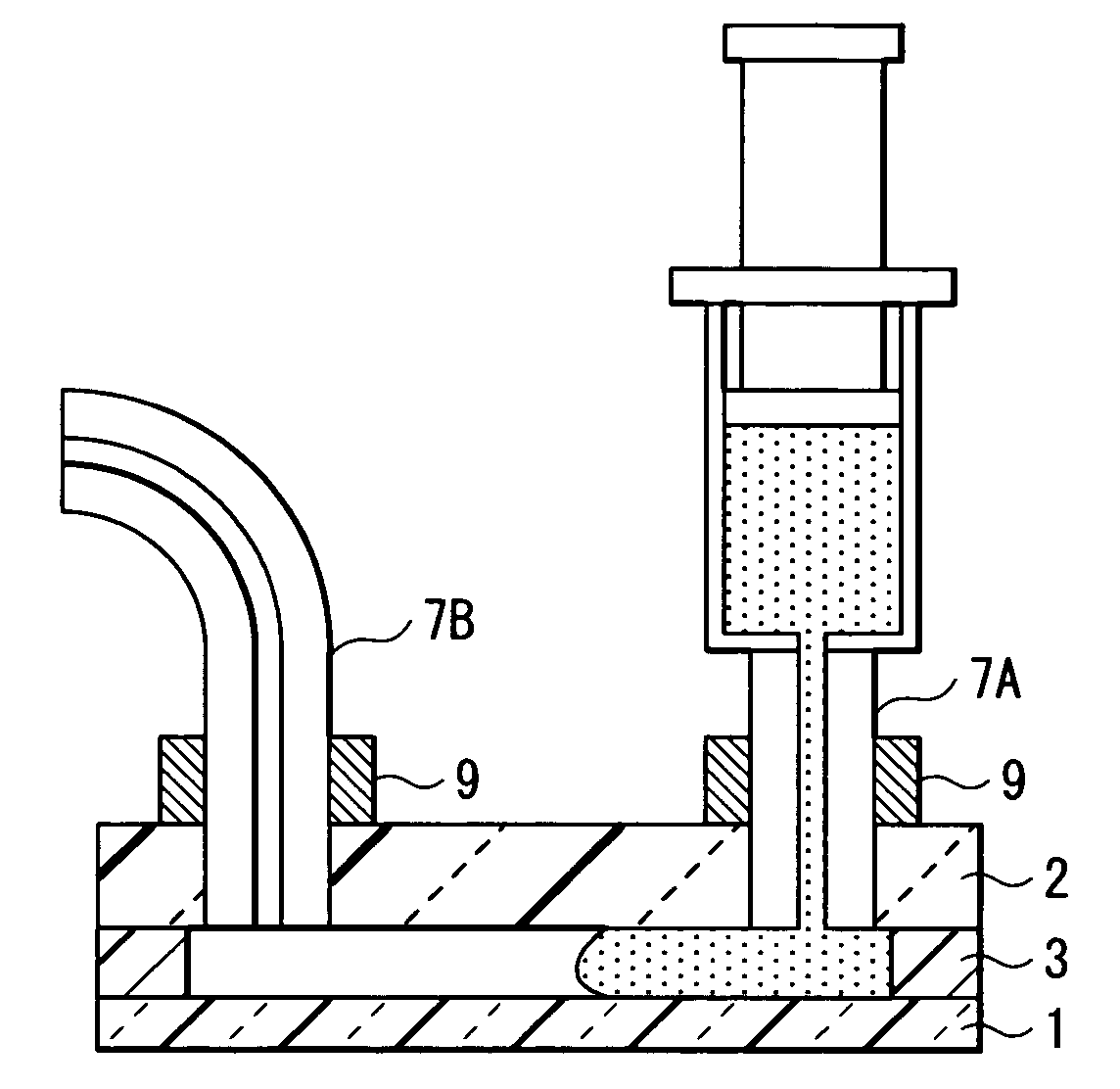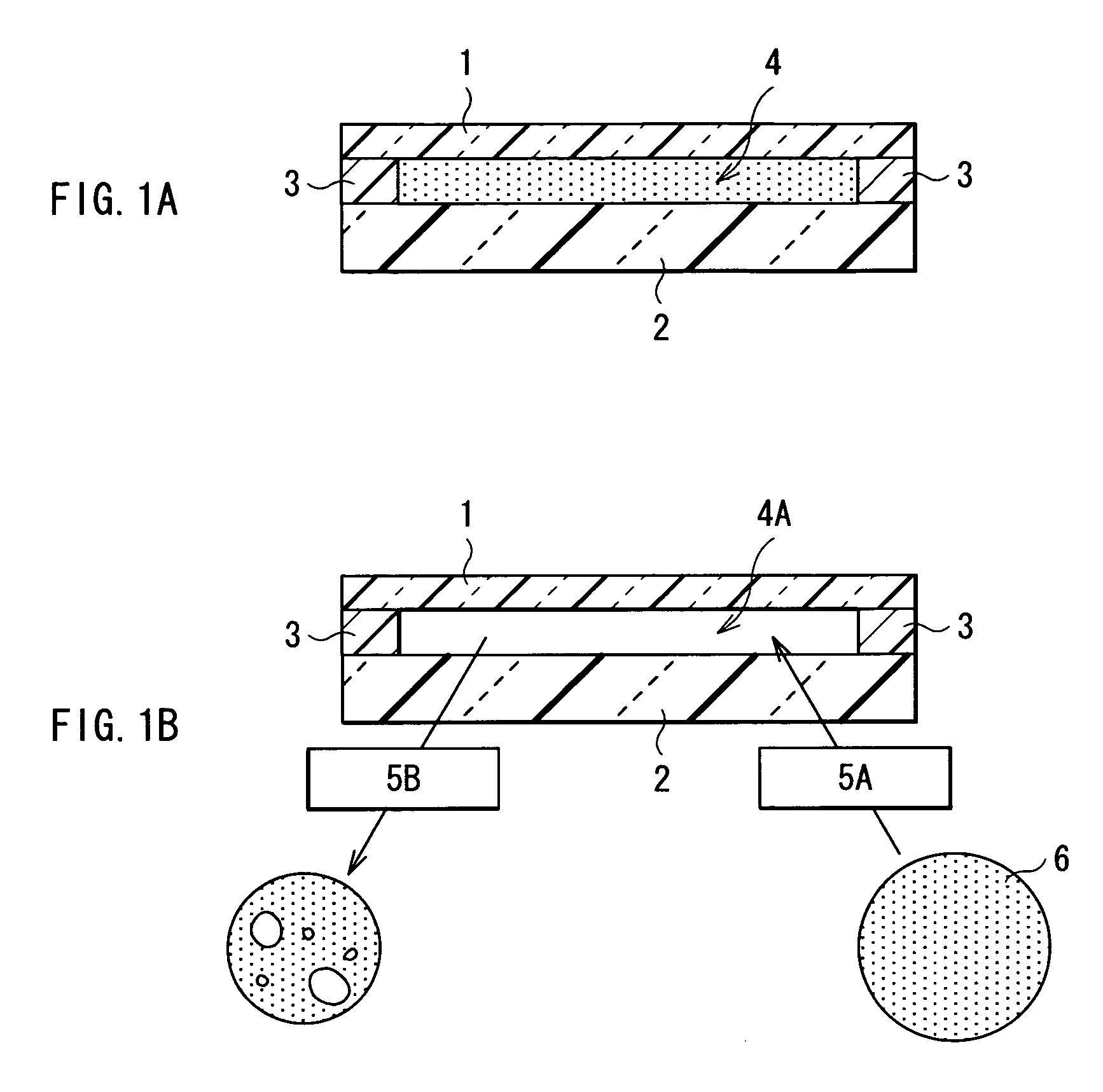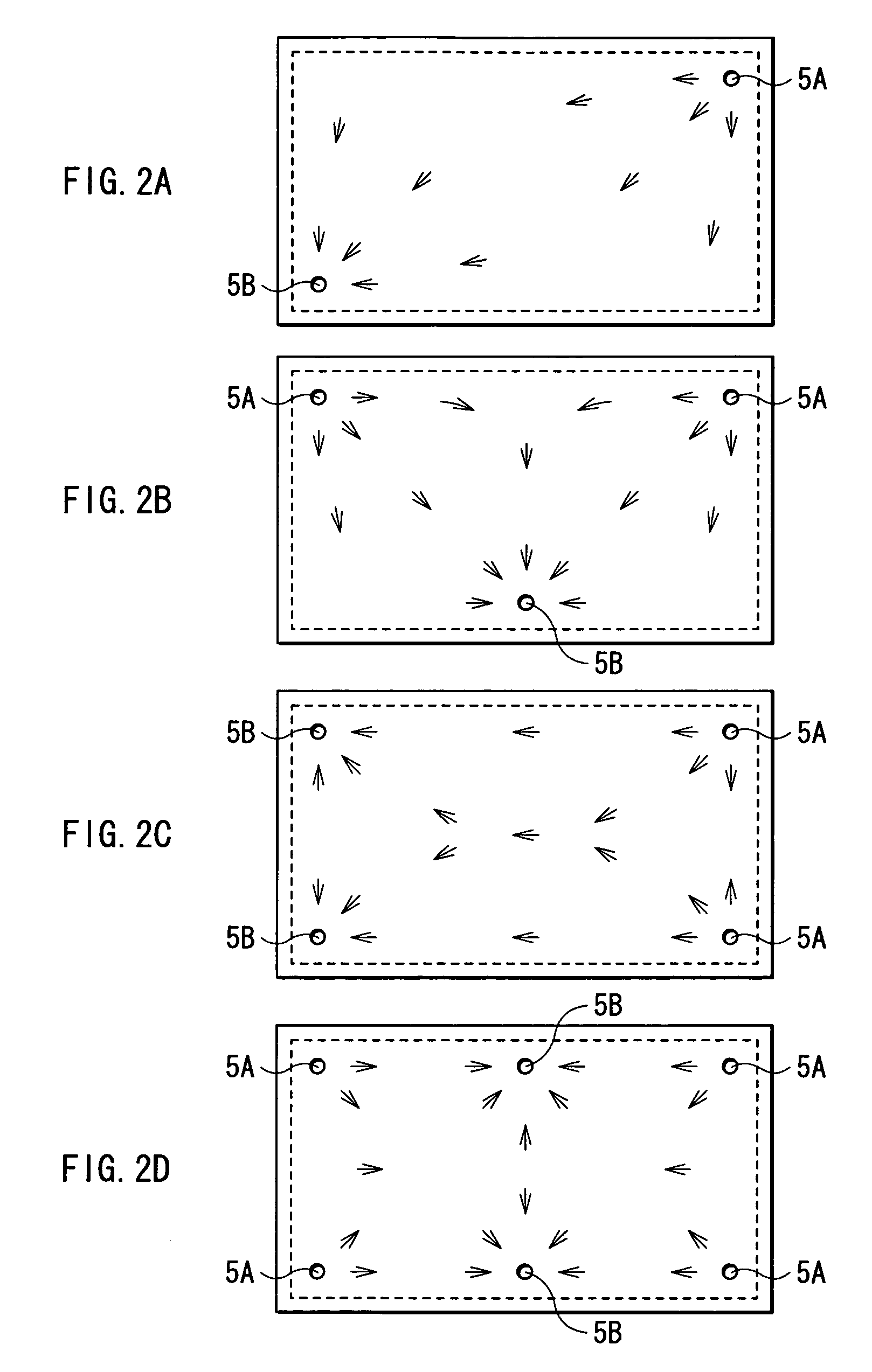Electrodeposition display panel manufacturing method, electrodeposition display panel, and electrodeposition display device
a display panel and display panel technology, applied in the manufacture of electric discharge tubes/lamps, discharge tubes luminescnet screens, instruments, etc., can solve the problems of difficult hermetically sealing the openings and the display material itself is not easily filled, and achieve the effect of high-reliability display panels in a short time and efficient
- Summary
- Abstract
- Description
- Claims
- Application Information
AI Technical Summary
Benefits of technology
Problems solved by technology
Method used
Image
Examples
example 1
[0111]Respective mixing amounts of the following constituents were dissolved in dimethyl sulfoxide to prepare an electrolytic solution.
[0112]Silver iodide: 500 mmol / l
[0113]Sodium iodide: 750 mmol / l
[0114]Triethanolamine: 67 mmol / l
[0115]Coumarin: 5 g / l
[0116]2-Mercaptobenziimidazole: 5 g / l
[0117]Into the foregoing electrolytic solution, a fifth weight resin liquid, TA-140 (manufactured by Dai-ichi Kogyo Seiyaku Co., Ltd.) was mixed to prepare an electrolytic solution. As a white pigment, titanium oxide, JR-805 (manufactured by Titan Kogyo K.K.) being weighing equal to the electrolytic solution was added to the electrolytic solution, and dispersed by a homogenizer. The resultant was accommodated in a desiccator, depressurized by an oil diffusion pump until when bubbles were not produced from the electrolytic solution in which the pigment was dispersed. To the resultant, an organic oxide, Perocta O (manufactured by NOF Corporation) was added at a ratio of 2 wt % of the resin solution, whi...
example 2
[0121]A PET film 51 was affixed to the whole rear face of the glass epoxy substrate (rear substrate 2), which is the same as used in Example 1. As an adhesive, a synthetic rubber spray glue (manufactured by Sumitomo 3M Ltd.) was used. As in Example 1, in the opposing corners of the substrate 2, the circular opening 5A being 4.0 mm in diameter and the circular opening 5B being 2.0 mm in diameter were drilled. The film type hot melt adhesive 3 and the transparent electrode substrate 1, both of which are the same as used in Example 1 were used to assemble a cell.
[0122]The display material 6 was sucked in the 10 ml injector 8 made of polypropylene, to which a threaded nozzle was connected, and the nozzle was screwed in the opening 5A. The inside of the opening 5A and the opening 5B was sandwiched by using acrylic plates being 1 cm thick from the both sides of the cell. The cell was fixed by a clamp with the glass epoxy substrate 2 to which the injector 8 was connected held downward and ...
example 3
[0124]In the opposing corners of the glass epoxy substrate (rear substrate 2), the same as used in Example 1, the circular opening 5A being 4.0 mm in diameter and the circular opening 5B being 2.0 mm in diameter were screw-cut and drilled. The film type hot melt adhesive 3 and the transparent electrode substrate 1, the same as used in Example 1 were used to assemble the cell.
[0125]The display material 6 was sucked in the 10 ml injector 8 made of polypropylene to which a threaded nozzle was connected, and the nozzle was screwed in the opening 5A. Of the both faces of the cell, the inside of the opening 5A and the opening 5B was sandwiched by using acrylic plates being 1 cm thick. The cell was fixed by a clamp with the glass epoxy substrate 2 to which the injector 8 was connected held downward and the transparent electrode substrate 1 held upward. The opening 5B was connected to a diaphragm pump through a polyethylene tube whose end was screw-cut in the same gauge as of the opening 5B...
PUM
| Property | Measurement | Unit |
|---|---|---|
| viscosity | aaaaa | aaaaa |
| height | aaaaa | aaaaa |
| reflectance | aaaaa | aaaaa |
Abstract
Description
Claims
Application Information
 Login to View More
Login to View More - R&D
- Intellectual Property
- Life Sciences
- Materials
- Tech Scout
- Unparalleled Data Quality
- Higher Quality Content
- 60% Fewer Hallucinations
Browse by: Latest US Patents, China's latest patents, Technical Efficacy Thesaurus, Application Domain, Technology Topic, Popular Technical Reports.
© 2025 PatSnap. All rights reserved.Legal|Privacy policy|Modern Slavery Act Transparency Statement|Sitemap|About US| Contact US: help@patsnap.com



